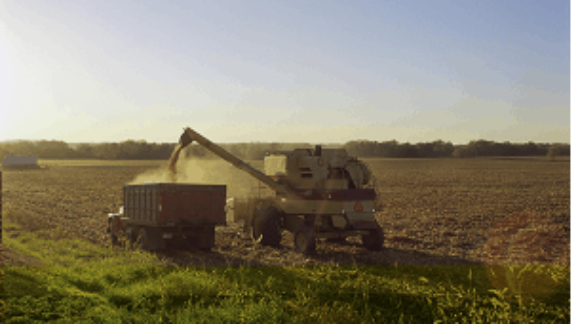Rounding Up the Cowards: EU Leaders Block Glyphosate

 As reported in the Wall Street Journal this week, yet another valuable pesticide product may eventually be removed from the market place. But despite the Journal’s assertion that the controversy stems from uncertain science, the real source is politics. Too many European lawmakers are afraid to take a stand that might offend environmental activists, even though inaction will raise food prices and hinder production.
As reported in the Wall Street Journal this week, yet another valuable pesticide product may eventually be removed from the market place. But despite the Journal’s assertion that the controversy stems from uncertain science, the real source is politics. Too many European lawmakers are afraid to take a stand that might offend environmental activists, even though inaction will raise food prices and hinder production.
At issue is the active ingredient—glyphosate—used to make Monsanto’s chemical herbicide known as Round-up. Monsanto’s license to sell it in the European Union expires at the end of this month. EU regulators at the European Commission have been trying to extend the license but have been unable to gain enough support from member states. Originally, the commission failed to get approval for its proposal to extend the license for 15 years. Instead they were granted six months, extending the license expiration from December 31, 2015 to June 30, 2016. Most recently, the commission sought an extension for just 12-18 months to allow its continued use while the European Chemicals Agency conducts research on the product’s safety.
This latest vote among member states failed not because a majority of states voted against it. Ironically, twenty states voted yes for the extension and only one—Malta—opposed it. Yet highly populated states like Germany, Italy, and France abstained from voting, which is why the proposal failed. To pass, the commission needs a “qualified majority” of member states to vote yes, which it cannot get if high-population states abstain (see details here). A vote appealing this last round is expected June 23, but if the commission cannot prevail, the chemical will be off the market in Europe after June 30.
The cowardly, no-vote approach may well reflect an acknowledgement that actively denying its use isn’t scientifically justified. The science is clear that glyphosate poses negligible risks as it is currently used. It’s also clear that the product provides important public health benefits by making agriculture more productive while reducing environmental impacts. Elimination of glyphosate will contribute to hunger and malnutrition problems because it will be harder and more expensive for farmers to produce food.
“A ban will have dramatic consequences on European agriculture … We are worried about a possible ban of glyphosate, but hopefully science will demonstrate safe use and politicians will listen to the experts,” explained a Danish Agriculture & Food Council spokesperson to the Danish publication called Sputnik.
The lack of political will to authorize glyphosate is a direct result of green hype and “anti-Monsanto” activism, which was bolstered by a foolish hazard assessment released by the International Agency for Research on Cancer (IARC) last year. IARC classified the chemical as “probably carcinogenic” in March 2015, a politically timed decision that has impacted the EU consideration on extending the license. Science blogger David Zaruk provides many details revealing the political rather than scientific nature of IARC’s classification.
Nonetheless IARC classifications are largely useless because they simply focus on hazard, rather than risk. Hazard classification doesn’t consider exposure, which is key. Consider the fact that water is hazardous because of drowning risks, but when exposure is limited to a cup of water, it’s not risky. Because IARC doesn’t consider exposure, its classifications are not only meaningless, some are just plain dumb. For example, other IARC “probable human carcinogens” include “being a hair dresser” and eating red meat, but no one is rushing out to ban those.
IARC’s classification system should not be used for any policy decision because it’s really only half of an analysis. Once hazard is assessed, risk assessment is the next step and that includes consideration of actual human exposures.
Not surprisingly, when the European Food Safety Authority and the UN Food and Agricultural Organization completed that next step by considering exposure, they found glyphosate risks from residues on food to be far too low to present any health concerns. And most recently, the U.S. Environmental Protection Agency released a report produced by its Cancer Assessment Review Committee (CARC) on glyphosate that found current exposures safe and classified the chemical as “probably not carcinogenic.”
EPA’s report was only available for a few days before the agency pulled it off its website (it’s now available elsewhere), maintaining that it wasn’t complete. However, the report looks pretty final and was signed by the CARC members. Apparently the politics of stupidity related to glyphosate are not exclusive to the EU, and the EPA is apparently caving to green pressures.
Members of Congress are investigating the EPA action. Hopefully, our lawmakers will not be duped by the hype about this product and will exert the leadership necessary to allow farmers to use it to produce an affordable food supply.